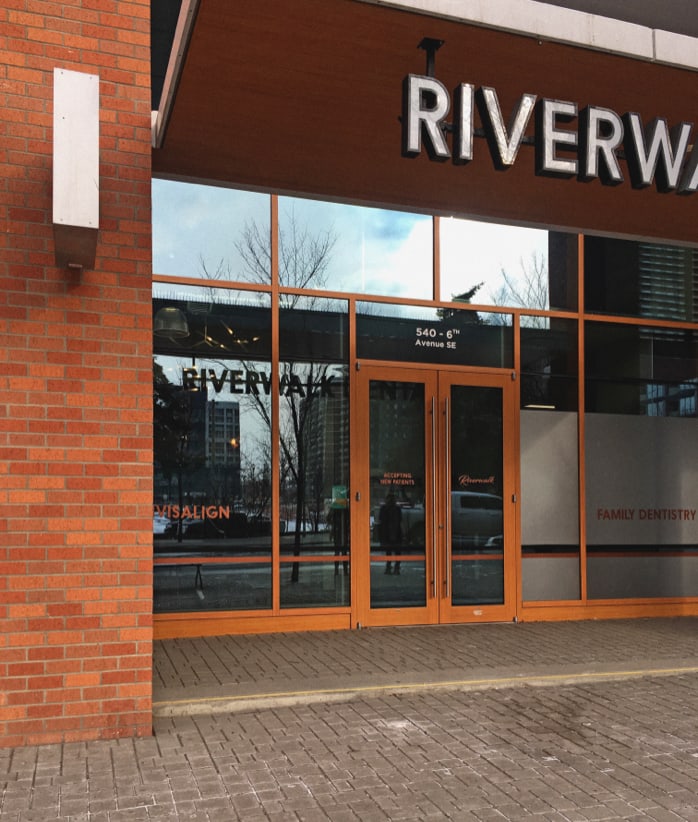Teeth can look yellow for many reasons, and yellow teeth aren’t inherently unhealthy. In fact, some people have naturally yellow-looking teeth or have discolouration due to an injury. With teeth whitening still a popular cosmetic procedure, you may wonder if your naturally yellow-tinted teeth can be whitened.
The short answer is yes—it just takes a little more than an at-home whitening kit.
In-office cosmetic treatments like professional bleaching, dental veneers, and dental bonding can be effective options for whitening teeth. Discuss your whitening options with your dentist. They can provide whitening advice that supports your unique mouth.
What Makes Teeth Yellow?
Several factors can cause tooth discolouration and may be either intrinsic (inside the tooth) or extrinsic (on the surface layer). Regularly consuming food and drinks like coffee, tea, red wine, and cola can stain teeth because they have strong colour pigments that attach to your tooth enamel. And if you don’t brush and floss often, plaque and stain-producing substances can build up on your teeth.
Aging is another factor. As we age, the outer layer of enamel on our teeth wears away, revealing the yellow dentin underneath. Certain medications, trauma, or diseases can also cause tooth discolouration.
Another unavoidable potential of tooth discolouration is genetics. The tooth’s natural colour, translucency, and brightness can vary between individuals based on their genes.
What Is Teeth Whitening?
Teeth whitening is a cosmetic dental procedure that can make your teeth appear brighter and whiter. There are various teeth whitening treatments available, such as in-office bleaching, at-home teeth whitening kits, and other at-home remedies like baking soda or hydrogen peroxide.
Among these, the most effective method is in-office bleaching. In-office bleaching done by a dental professional can lighten teeth by several shades in a single visit.
How Effective Is Whitening on Genetically Yellow Teeth?
Teeth whitening is a cosmetic dental procedure that can make your teeth appear brighter and whiter. Various teeth whitening treatments are available, such as in-office bleaching, at-home teeth whitening kits, and other at-home remedies like baking soda or hydrogen peroxide.
Among these, the most effective method is typically in-office bleaching. In-office bleaching performed by a dental professional can lighten teeth by several shades in a single visit. Professional whitening is also customized and doesn’t cause as much sensitivity as some at-home kits.

Teeth Whitening Options
At-home whitening kits aren’t as effective on genetically yellow teeth because discolouration is within the dentin instead of the enamel. Teeth whitening kits don’t usually penetrate past the enamel layer of the tooth.
Bleaching
Unlike at-home bleaching kits, professional bleaching can provide more obvious results. Most in-office whitening treatments can lighten teeth by 3 to 8 shades in a single visit. And because in-office bleaching is supervised by a dentist, a much stronger bleaching compound can be used, which can potentially penetrate deeper into the tooth.
Veneers
Dental veneers are a cosmetic procedure that improves the appearance of discoloured, chipped, or broken teeth.
A veneer is a thin shell-like material made from porcelain or a composite resin; however, composite resin is prone to staining.
Not everyone is a good fit for veneers. To be considered a candidate, you should meet the following criteria:
- Ensure your teeth are free from decay. Any tooth decay should be addressed before applying veneers.
- Make sure your gums are healthy and disease-free. Healthy gums are essential before veneers can be applied.
- Check that your teeth have sufficiently thick enamel. If your enamel is too thin, the veneer may not adhere properly.
- Assess the condition of your teeth. If a significant portion of your tooth is missing, your dentist might recommend a crown instead of veneers.
- Avoid grinding or clenching your teeth. Bruxism, the habit of grinding or clenching, can potentially damage or chip porcelain veneers.
Dental Bonding
Dental bonding involves applying a tooth-coloured resin to one or more of your teeth to repair damage. It can be used to whiten discolouration that hasn’t responded to professional cleaning.
First, your dentist will use a shade guide to select a composite resin colour that closely matches the colour of your non-discoloured existing teeth. They’ll then roughen the tooth’s surface and apply a liquid that helps the bonding agent stick. Your dentist will then apply the resin, mould the tooth into the right shape, and smooth the surface. Once the bonding material has been shaped, it’s hardened with an ultraviolet light.
While bonding is noninvasive, the material used isn’t as durable as your natural teeth and can chip or separate from your tooth. It can also stain easily from dark beverages and smoking.
Discuss Your Teeth Whitening with Your Dentist
There are many teeth-whitening options available, so discuss the best approach with your dentist. Call our team at Riverwalk Dental today to book an appointment. We’re happy to review your options and recommend an effective whitening treatment for your unique teeth.






